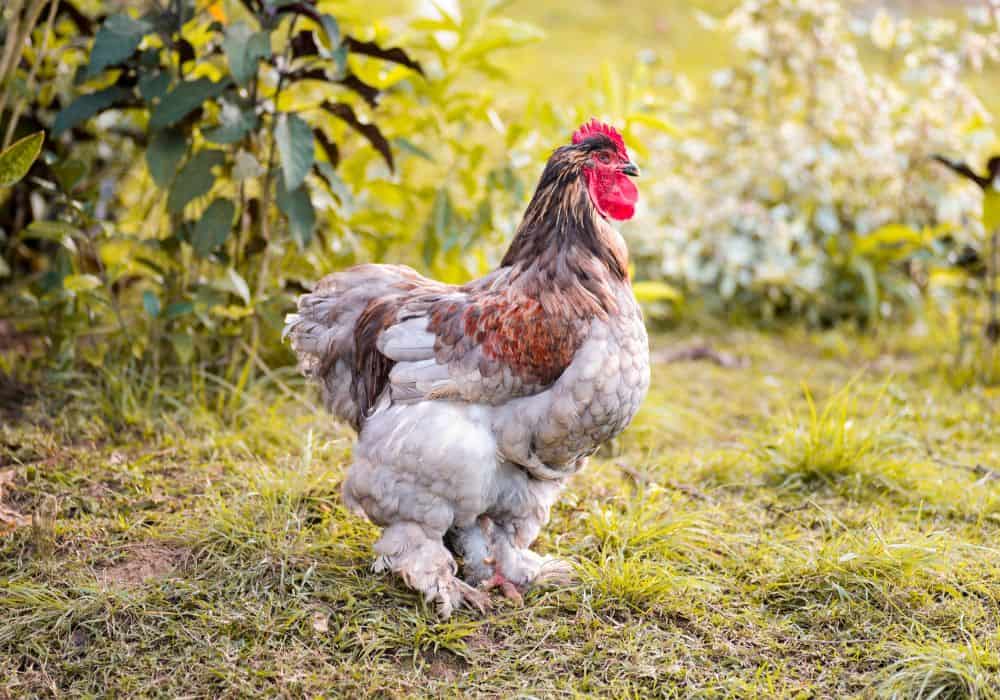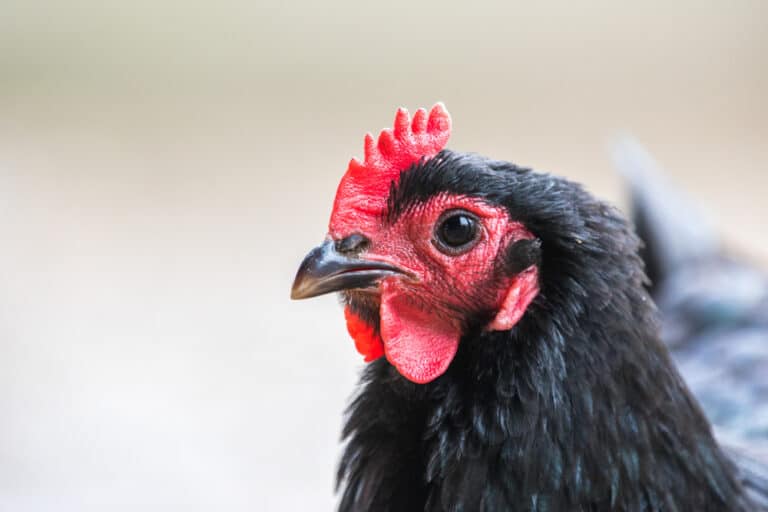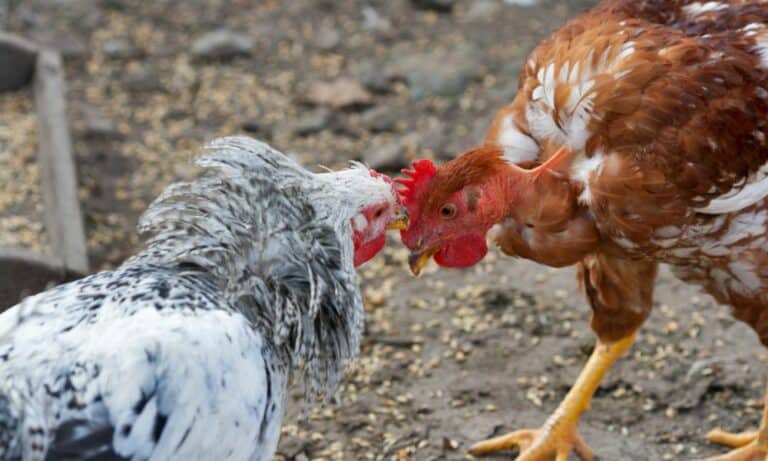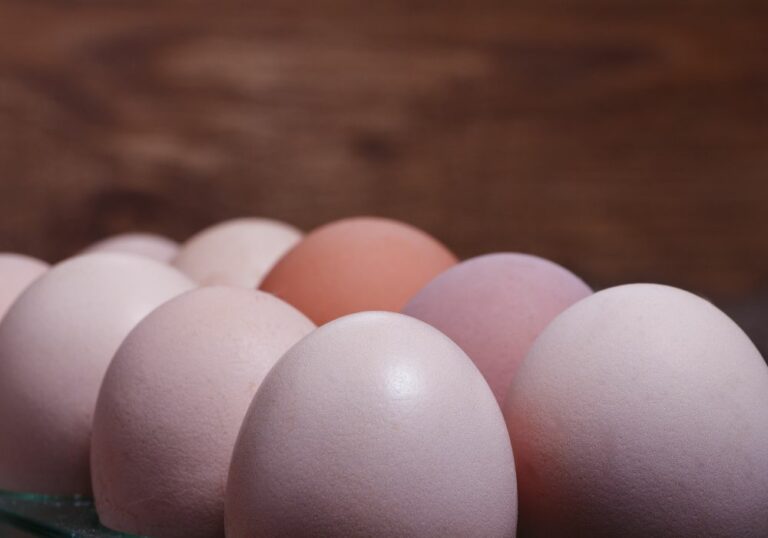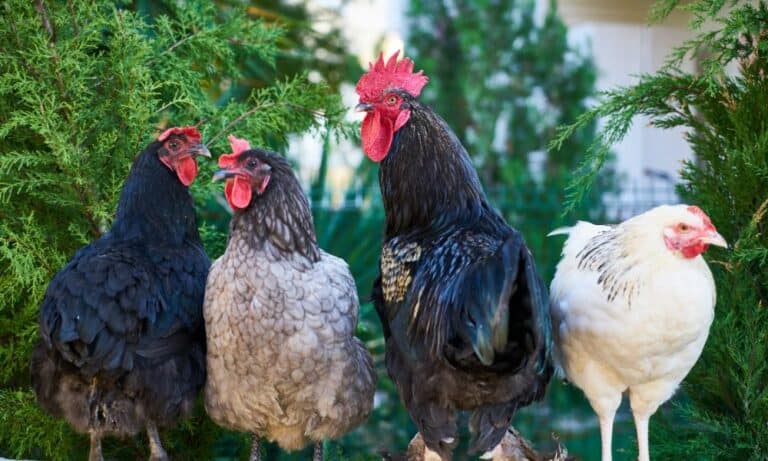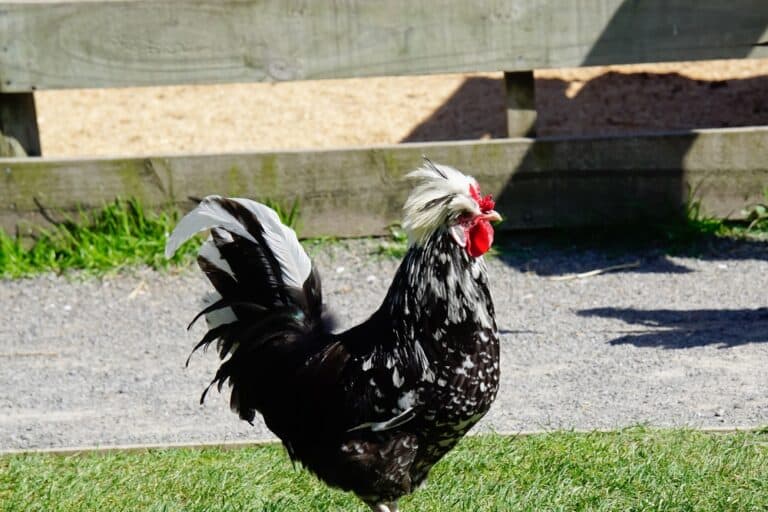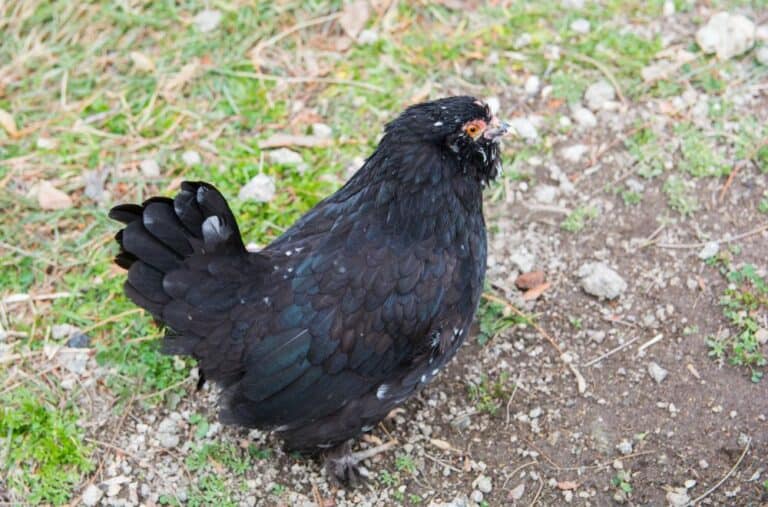Superstar egg-layers may have the attention of most backyard chickens keepers, but eccentric breeds like the Cochin Bantam can’t help but catch your eye. At the very least, these are entertaining birds, but they have more to offer than a cute appearance.
Cochin Bantams are friendly birds that serve mainly as show chickens or backyard pets. While other chickens only want to explore, Cochin Bantams would rather sit on the few eggs they lay and socialize with their human companions.
In this guide, we explore where Cochin Bantams come from, what they look like, and what they need to lead happy, healthy lives.
Cochin Bantam Chicken Origin
While we know they’re originally from China, the origin of Cochin Bantam chickens has been muddled through the years. What we know for sure is that the breed is referred to as the Pekin in Europe, and we can assume that the original contributor of the breed came from Peking (now Beijing) in the 1860s.
There are two popular explanations for how the first Cochin Bantams traveled from China to England.
The first focuses on the end of the Second Opium War. Some say that the chickens were stolen from the Summer Palace when European soldiers captured the emperor and looted his home, sending some buff Cochin Bantams back to England.
Another story claims that English soldiers imported the chickens with the intention to give them to Queen Victoria, a known lover of chickens.
We may not know exactly how they got to England, but we do know that British chicken keepers of the Victorian Era crossed European Bantams with the new Chinese stock.
While the American name for the breed makes it seem like they’re a dwarf version of full-size Cochins, the Cochin Bantam is an entirely separate breed. They’re now seen as ornamental chicken, and breeders have spent well over a century developing different feather colors and maximizing their fluffy ornamental appearance.
Cochin Bantams are one of the most popular “bantam” breeds sold today, second only to the English Game Bantam.
Cochin Bantam Chicken Appearance
Cochin Bantams have a near cartoonish appearance. They’re already shorter than most chickens and keep a low stance that magnifies their stout appearance. Furthermore, the chickens have a ball of feathers serving as their tail.
These small chickens are easily marked by the soft, fluffy plumage that covers their entire body (including their shanks and feet). Some breeders focus on frizzled feathers that have a different texture and curl outward, giving the appearance of a chicken that stuck its beak in a socket.
The face of a Cochin Bantam is more expressive than other breeds. Their skin is free from any wrinkles, and they have eyes that seem comically large for their head. Their red earlobes and reddish bay eyes provide a splash of color, while other details vary from male to female birds.
Cochin Bantam roosters are larger, weighing anywhere from 26 ounces as a cockerel to 32 ounces when fully grown (although the American Poultry Association standard maxes them out at 30 ounces). They have long pendant wattles and stand with a regal posture.
Cochin Bantam hens are only slightly smaller, weighing 24 ounces as a pullet and a maximum of 28 ounces when mature. The females keep their heads closer to the ground, standing with their faces about level with their tails.
Cochin Bantam Color Varieties
Breeders have put plenty of effort into developing a robust array of feather patterns in the breed, and there are over 25 colors and counting.
Of these, only 18 are recognized in the standards set forth by professional bodies like the American Bantam Association. Some examples include:
Modern colors like lavender or calico will not win a Cochin Bantam any shows, but they provide a unique appearance to a backyard flock.
Cochin Bantam breeders focus on producing in-standard colors and maximizing the fluffy, round appearance the breed is known for. For this reason, show birds may have excessively short legs and an abundance of plumage, while those sold mostly as pets may not appear as characterized.
Cochin Bantam Chicken Temperament
Cochin Bantams act as sweet as they look, and they make excellent companions. This fluffy chicken is a favorite for many because they have a calm nature, love attention, and act more similarly to dogs than T-rexes (which, if you didn’t know, are ancient relatives of chickens).
If you’re in need of a quick pick me up, simply find some videos of Cochin Bantams running. Waddling at normal speed is already amusing, but it becomes even more hilarious once they hit the gas.
Cochin Bantams are great around other animals, and they’re one of the better choices if you have small children who want to frequent the coop.
This doesn’t mean they’re all peace and love. While Cochin Bantams are gentle when necessary, they can be protective of their flock and territory. Like most breeds, roosters tend to be feisty and may act aggressively when the situation demands it.
Cochin Bantams don’t take up much space, but they’re not the quietest chickens. They prove a small voice is not the same as a soft one, and even their tiny crows may grate your neighbor’s nerves.
This all feeds into the charm of the breed, and Cochin Bantam owners usually soak up every detail.
Cochin Bantam Chicken Broodiness
Unlike the egg-laying powerhouses populating most backyard flocks, Cochin Bantams go broody often. It’s likely your hens will try to sit on their eggs regularly, and they’re likely to stay there unless you intervene.
You can always interrupt the brooding cycle, but many chicken keepers use Cochin Bantams to hatch eggs and even raise the young of other poultry. They are excellent setters that do not discriminate, and they’re known to take in young ducks, pheasants, and other adoptees.
Cochin Bantams make great mothers if you allow it, and they can take some of the stress of raising baby chicks.
Cochin Bantam Chicken Ideal Purposes: Eggs and Companions
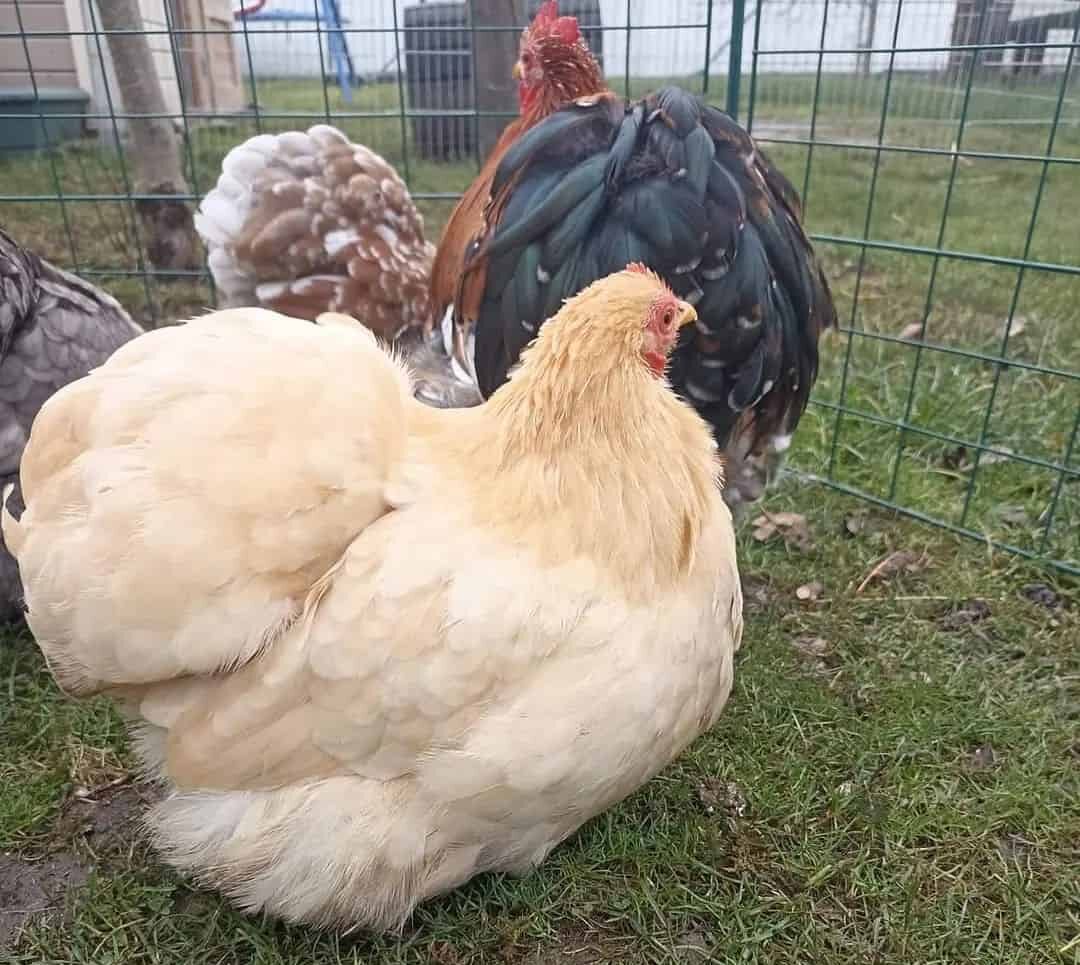
Unless you intend to show or breed your Cochin Bantams, you’re likely to have them for eggs or companionship.
Starting when they’re six months old, Cochin Bantams lay about 2 to 4 small brown eggs per week. This results in 150 to 200 per year, but allowing them to sit and hatch their clutch drops this number significantly.
This won’t give you eggs for breakfast every morning, but most Cochin Bantam owners don’t mind. The greater draw of the breed is their unique appearance and puppy-like personality.
Cochin Bantams are easily tamed and they don’t mind handling. They’ll be happy to follow you around while you complete your chores, and you can usually get them to sit with you with little to no bribery.
Cochin Bantam Chicken Care Requirements
The breed requires more specialized care than hardy production-centric chickens, but they repay your kindness tenfold. They aren’t the hardiest breed, but setting them up with the right diet and shelter decreases the risk of issues that plague Cochin Bantams.
Feeding Cochin Bantam Chickens
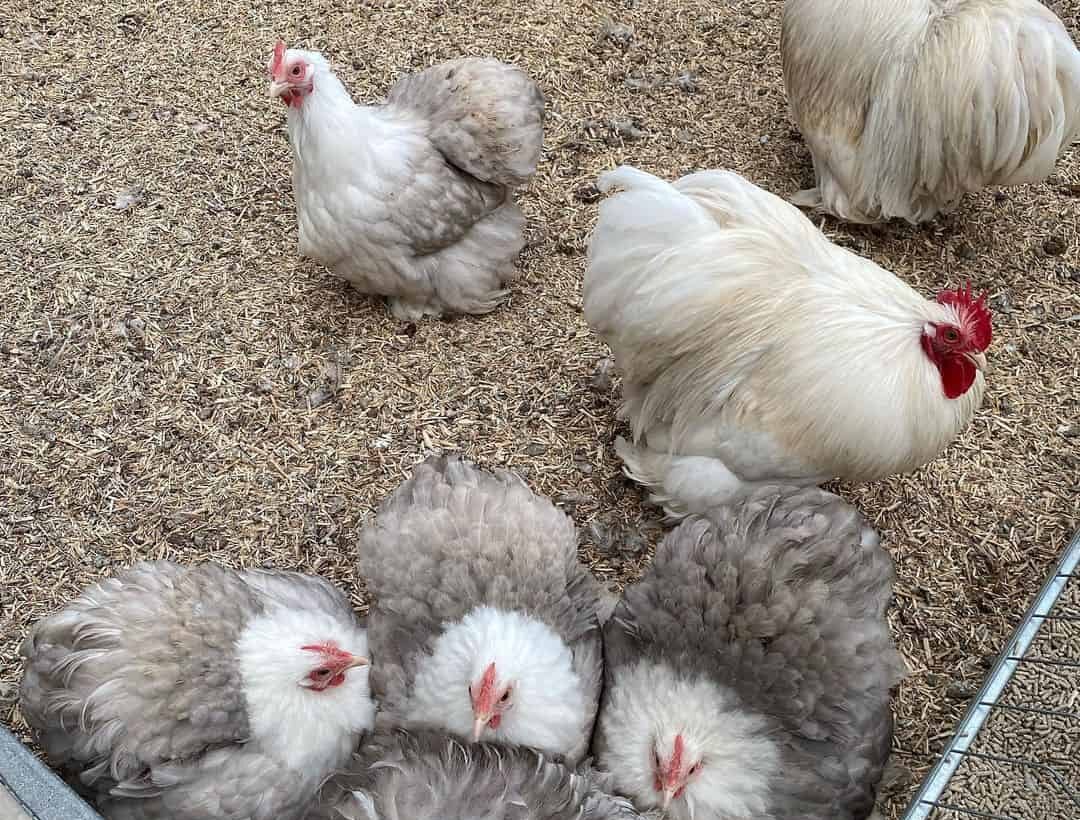
Cochin Bantams are more susceptible to overeating, and their small size makes it much easier for them to become overweight. This is why it’s so important to lay a solid nutritional base with age-appropriate commercial feed.
Feed Cochin Bantam chicks a high-protein starter formula to ensure their body has what it needs to develop properly. This gives them the best start at life and sets them up for success later on.
They can eat this until they reach maturity. Hens should switch to a layer feed to replenish the calcium their body uses up while making eggs. Alternatively, you can offer your flock a maintenance feed with supplemental calcium like crushed oyster shells.
Offer treats and supplemental food in strict moderation. While they appreciate disposing of your fruit and vegetable scraps, this is usually what puts on unnecessary weight. If your Cochin Bantams eat anything other than scratch, mash, or crumbled, make sure they have grit available to help with digestion.
Sheltering Cochin Bantam Chickens
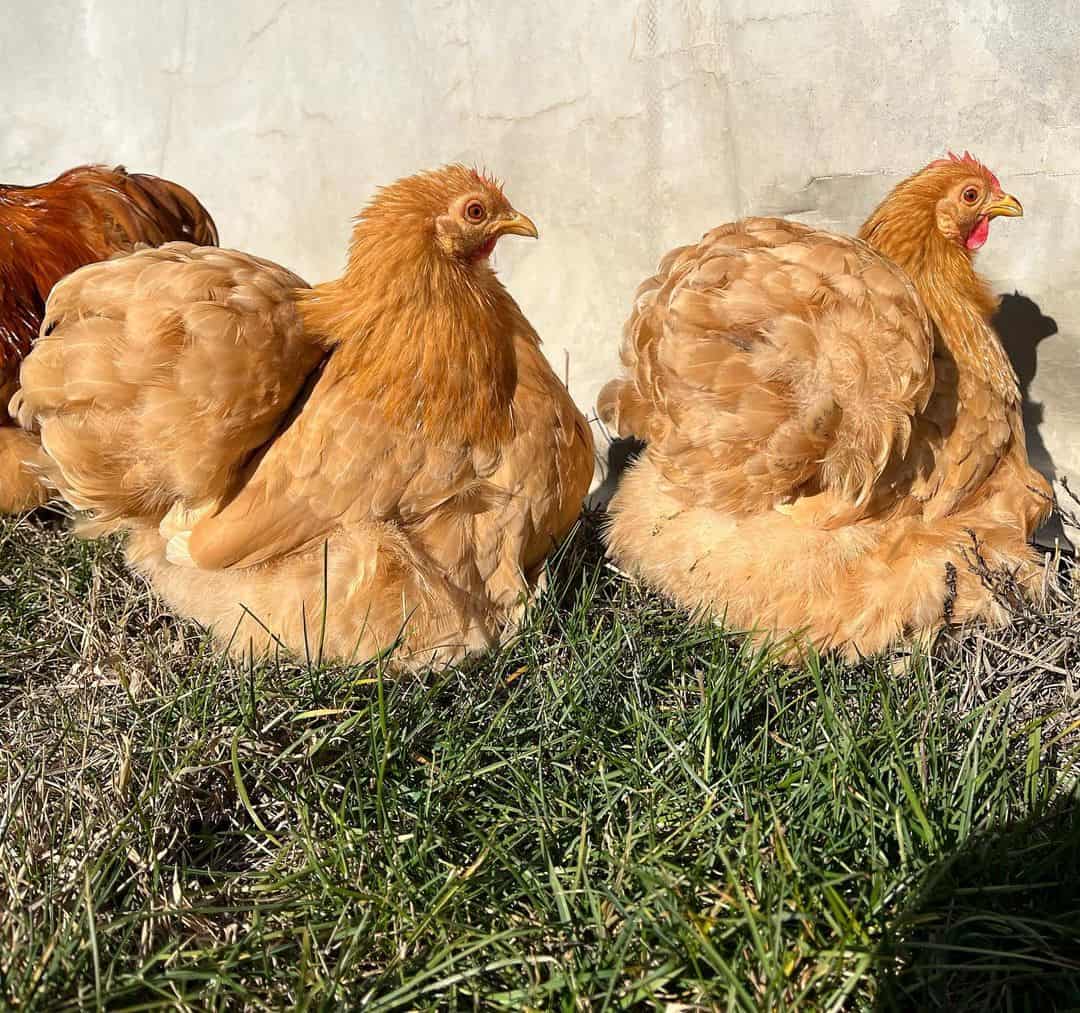
The fuzzy appearance of a Cochin Bantam is misleading. While they appear well-protected from the cold, their abundance of feathers can actually exacerbate the issue.
It’s important to offer Cochin Bantams a dry environment at all times. Their fluffy plumage will soak up any mud or water on the ground, increasing risk of illness or frostbite (in the cold).
Frizzled Cochin Bantams are even less hardy than those with regular feathering, and they’re sensitive to hot and cold weather as well as windy or wet conditions.
Because Cochin Bantams are so slow and poor at flying, you should take extra precautions to keep predators away. You only need a 2-foot fence to keep most Cochin Bantams in, but you may opt for a fully enclosed run to protect them from flying hunters.
Make sure your coop, run, and free-range areas are accessible for your Cochin Bantams. They try their best, but many need lower roost height as well as set up a ramp or ladder to any higher level.
Health Concerns for Cochin Bantams
As long as you cover their basic needs, Cochin Bantams should live about 8 years. During this time, you will need to keep up with preventative deworming, as well as treatments for pests like lice or mites.
Cochin Bantams easily fall victim to respiratory issues like infectious coryza (“the pip”), even with a good baseline of care. Make sure you understand how to respond to the first signs of illness and have a veterinarian familiar with chickens in case the problems get worse.
Conclusion
Whether you’re looking for a friend or a laid-back layer, Cochin Bantams bring a lot to the table. They won’t outperform business breeds like the Rhode Island Red, but their adorable appearance and charming personality make up for it.
When raising Cochin Bantams remember to:
- Keep them as dry as possible
- Closely monitor their eating habits
- Seek veterinary care with any persistent or severe problems
Comment with any other questions you may have about Cochin Bantams, and we’ll point you in the right direction. Thorough research is essential before deciding whether this ornament breed is a good fit for your flock.

